This is Part 5 of a 5 part series on the coming US war against China. For the other parts:
Endsieg
“War is the continuation of politics by other means”-Carl von Clausewitz. Given the insufficiency of non-military measures at halting the advancement of the PRC, and the US’s long proclivity for warmaking, it was inevitable that they’d reach for their biggest hammer to try and show that damn stubborn nail who’s boss. How exactly the war will unfold is a matter of considerable speculation and wargaming by all sides. US media and think tank run simulations try to project confidence, claiming that a US victory is not only possible, but likely, and that all that is needed is more resolve and money. The Pentagon itself though, is much more skeptical, with leaks from military officials indicating that in their wargames, which obviously have access to much better information and resources, result in Chinese victories, and each time showing a Chinese victory that is more and more rapid and complete than the last simulation run. Some Pentagon officials also express to the media concern about escalation to nuclear war. Chinese media, think tanks, and the PLA all project confidence in their ability to win such a war. But how exactly would this war unfold? The overwhelming probability is that the war would be triggered by a declaration of independence by Taiwan or immediate moves towards that. The US will have commanded the Taipei administration to enact the trigger at a time of the US’s choosing, which means that there will likely already have been very clear signs of war clouds on the horizon before it is actually pulled as US troops and equipment pour into the western Pacific and the US forces its allies to mobilize as well. China will see this effort and begin mobilizing. Once the declaration of independence or irreversible step towards it is announced, the PLA will spring into action almost immediately, executing a scenario that they have practiced for years, and that they and the entire Chinese nation has been awaiting for more than 7 decades, the plan for the liberation of Taiwan and its reunification with the mainland.
The initial stage will likely consist of a PLAN and PLAAF blockade of the island, prohibiting the entry and exit of aircraft or ships, while MSS intelligence operations related to an imminent war in the Pacific go into action. Taiwan is an island that is very close to mainland China, and given its population and economy, cannot sustain itself without outside imports of food, energy and other important commodities. The US think tank and military elite has openly acknowledged that the US must begin aggressive military action immediately upon this happening, or they are sure to lose the island. The US could also stage some kind of Gulf of Tonkin style false flag/provocation to supply additional public pretext for intervention. Once the US response gets rolling an all-out slugfest in the Western Pacific is likely to begin almost immediately. On the home front, China is much better prepared for war. Chinese society is far more unified than the US, and is generally more willing to sacrifice for what is viewed by all Chinese as an issue of fundamental national dignity and unity, and for the small minority that might be opposed there’s the Ministry of Public Security. China is also the world’s manufacturing colossus, with much larger factories producing much greater quantities of necessary industrial goods like steel or lower end chips than all the western countries combined, and an MIC that is rapidly outpacing US production in arms. China also maintains a healthy fiscal state, with fairly low tax and debt levels which could both be ramped up in an emergency. China also maintains enormous govt run stockpiles of key commodities for emergencies. China would probably bring back at least a partial draft to conduct the war, and its draftee’s quality will have at least some edge considering the short mandatory military training conducted in Chinese universities. The US by contrast is a profoundly divided society, and starting a war halfway around the world is inevitably going to raise more domestic dissent than someone having brought war to your doorstep to try and steal a part of your country from you. The US also has comparatively abysmal industrial production in all sectors, and adding all its core allies still doesn’t make up the gap. US reindustrialization efforts, especially in computer chips (can’t import from a smoking crater when the war starts) have met with limited success. The US MIC is also completely unprepared for an actual major war, with abysmally low production rates of everything from ships to missiles to aircraft at astronomical cost, while also obtaining most materials and parts from China despite more than a decade of Pentagon and congressional complaining and pressure to shift to other sources. The US also stockpiles key commodities, but is also more prone to using them for momentary political advantage by its leadership, as evidenced by Biden releasing oil reserves to keep prices low ahead of the US elections. The US economy already has fairly high taxes and a crushingly high debt which limits its fiscal room for maneuver. The US post-Vietnam all volunteer army, already straining from insufficient recruits and continually lowering standards, will not be able to take the pressure, and a draft will have to be instituted. Given that the US military is already complaining that those who try to sign up now often have what are supposed to be disqualifying problems like psychological issues or physical ailments, the quality of draftees is likely to be considerably worse than that. Diplomatically, the US at the moment is still in a superior position. The US has more vassals it can call into the fray, while China has none. Most of the diplomatic efforts by the US have been laying the groundwork for such a conflict. India is a potential entrant into the war on the US side but is increasingly unlikely to do so given US failure to fulfill promises and warming relations with China. Russia is relatively unlikely to immediately participate in hostilities against the US, but could enter later especially if the US escalates drastically and/or China looks like it might lose. Russia will supply China economically though, preventing the West from choking China off on most major raw materials. The DPRK is a friend-ish to China, and China may entice them to complete their national reunification at the same time by sending troops into the US controlled South. For other countries, China is still the world’s workshop and the largest trade partner for most of the world, a relation that buys a lot of goodwill and economic weight that will make any US blockade or sanctions difficult if not impossible to enforce.
Nevertheless, the US is expected to attempt to wage an all-out economic war and total blockade against China, including using the US dollar as a weapon against China. Because of this, China is already unwinding its dollar assets and buying substantial amounts of monetary gold and building relationships with other countries so they will be against China sanctions. China and other countries are also in the process of building alternative financial and trade infrastructure that bypasses the US. For China, the ultimate objective will be the reunification of their country and the breaking of US military power in East Asia and the Western Pacific. China does not seek the destruction or total surrender of the US or even any of its satellite countries, many of whom are economic partners. For the US though, the objective will be to try and destroy China. China is geographically large and heavily populated enough that even if the US inflicts a defeat of moderate severity China is likely to come roaring back angrier than ever. Therefore, their objective is to turn back the clock to the century of humiliation, and try and crush any prospects of economic development in China, institute regime change, and if possible, fracture the country.
In terms of combat, the war will be split into multi domain warfare on all fronts, land, sea, air, space, covert, informational etc. Chinese land forces are extremely firepower heavy, with a massive industrial apparatus able to supply them virtually unlimited quantities of shells, rockets, and missiles to crush their opponents. US formations often have comparatively less organic firepower, often relying on aerial assets to do all that for them.China has expressed no real interest in nor is it very likely to have the capability to conduct a large-scale amphibious landing on faraway foreign soil and then take over and sustain an occupation targeting say the Philippines or Japan, much less Australia or the US. A serious ground invasion of mainland China seems suicidally stupid for the US, considering China’s much larger land army and an enormous and extremely hostile population. Any attempted US landing on the Chinese mainland is likely to be repulsed with extreme casualties. However, it cannot be ruled out given how delusionally overconfident the US is for seriously considering a war with China in the first place, and the US’s maximalist war aims.
It is highly likely that the land combat that takes place in this war will take place on Taiwan as well as some Pacific and South China Sea islands. Amphibious operations are already hard enough, and Taiwan is a very mountainous island. However, much of the population on Taiwan and the ROC military is considered to be both in poor condition and rather unwilling to fight. The population of Taiwan is prosperous, and has a lot more to lose from going off to war than in poorer countries like say the Middle East or Ukraine. People who are fat, rich and happy do not make good soldiers. The ROC military is overwhelmingly dominated by conservative Chinese nationalist KMT supporters who hate the Taiwan independentist liberals even more than the communists of the mainland. The DPP and their US backers are currently trying to resolve this by recruitment drives and allowing foreigners to enlist, clogging up the military with US “volunteers”. Political Taiwan nationalism is also not very high on the island, increasingly being seen as a form of collective suicide given how strongly opposed the mainland is. There is also likely a substantial presence of spies and sleeper agents from the mainland that would be activated in case of war. It is unclear how much if any real amount of foreign troops can be stationed on Taiwan before the PLA blockade would make it impossible.
In general, the PLA is likely to have a serious edge over US forces, with vast supplies of troops and equipment of all kinds from drones to shells available across much shorter supply lines compared to the US stringing along a supply line and deployments that will be getting attacked across half the planet from its puny and inadequate factories. Most observers agree that this conflict will be a primarily aerial and naval conflict. China has built up a substantial air force, the world’s largest navy by ship count, substantial drone fleets, as well as the world’s largest conventional missile arsenal. The US has the world’s largest air force, significant drone fleets, and a heavier navy given the large number of supercarriers it operates, but a somewhat limited missile arsenal. The US probably maintains a more powerful military overall, but China certainly has significant regional superiority by now. Development and doctrinal shift towards drones and missiles has been inhibited in the US by the influence of the pilot corps, and traditional use of manned aircraft as a crutch for all purposes given lack of opposing serious air defenses in US wars. US allies in the Pacific maintain their own militaries, but those militaries generally have fairly limited capabilities compared to the 2 superpowers, and will likely serve as auxiliaries attached to US units. For this reason, I will not give further separate mention of these forces, they will serve purely as the assistant puppet militaries of the US. The value of US allies comes more from their location as a basing site for the US forces and as sponges to soak up Chinese missiles.
The US faces a serious problem in terms of force concentration compared to China. China has minimal global commitments and the entire PLA will be almost solely focused on destroying the US in the Western Pacific. The US by contrast is severely overstretched around the planet, and any attempt to concentrate most or all of its assets against China will leave their presences and satrapies in other parts of the world vulnerable. They may decide to concentrate in that manner anyway but that would almost certainly lead to new problems arising for the US in other parts of the world. On top of peacetime commitments, the US may have started other new wars in other parts of the world (Mexico, Venezuela, Iran, Russia, etc.) prior to the war with China, wars that very well still be ongoing. Thus China will be able to apply overwhelming force against a locally weaker opponent. The two powers will begin attacking their foe with all of these assets. China and the US will use their navies to smash each other, above and below the waves. It is expected that much of both countries' surface fleets will be destroyed relatively quickly given the enormous proliferation of anti-ship missiles. In particular, the US supercarriers, the crown jewel of the US Navy and around which all its strategies revolve, are considered particularly vulnerable to heavy and accurate ballistic missile strikes by the PLA. Both countries' submarine forces will play a major role in the naval war, and in this the US is expected to have something of an advantage. China has sought to blunt this by developing its own submarine corps and investing substantially in anti-submarine warfare. The US has an enormous advantage in global basing compared to China and will likely try to leverage that into an attempted blockade of China, with chokepoints like the South China Sea, Strait of Malacca, East China Sea and others. China will likely attempt to militarily confront such blockades within the Asia Pacific region but is unlikely to have the power to do so farther afield, like a hypothetical oil blockade attempt at the Strait of Hormuz. Instead, China will likely seek to use diplomatic and economic pressure on other countries, including non-core US allies to force the US to give up or significantly reduce blockade enforcement, or just get other countries to ignore it outright. The US, try as it might, can’t fight everyone at once. US air forces and missile forces will attempt to conduct strikes against targets both at sea and on the Chinese mainland. The US, with a long and proven record of a near complete lack of concern or respect for most of the rules of war beyond appearances at best would almost certainly target sites on the Chinese mainland regardless of whether they are civilian or military. It is unknown how China would respond given that they have not fought a war in decades, but it is unlikely that China would let such attacks go unanswered. The effectiveness of these strikes is at least somewhat open to question given that China has a substantial air defense network and the US will face severe equipment shortages in all but the shortest wars. China’s enormous missile arsenal is expected to serve as China’s trump card and a compensation for its comparatively smaller air force, as such missiles are available in great quantities and can range out to and destroy all US and allied targets in the western Pacific past Guam and extending south to Northern Australia. Especially notable are the new hypersonic missiles coming into service with the PLA, something the US still has not been able to develop even a working prototype of itself. The US has poured billions if not trillions into missile defense as the great panacea for all their problems over the years, but performance so far has been poor even under testing conditions and even worse in actual combat. The US safe harbor from these missiles would have to be as far away as Hawaii. China would maintain home field advantage, with more knowledge of the region and its geography and with its forces within easy range of land-based covering assets like heavy SAMs or ground attack missiles and heavier land-based air support.
This war is also likely to be the first one that will be fought in space on a large scale. The US and China both have enormous amounts of satellites in orbit, including many for military purposes, mostly intelligence and communications. Both sides will likely try to blind and muzzle the other by targeting each other’s space based assets using everything from laser dazzling to hacking to outright ASAT missile attacks. This could very well clutter space up with so much debris that space launches become impossible for years to come. China has an absolutely enormous industrial base to sustain both civilian and military needs so attrition in all fields would favor China. The US maintains an ostensibly more powerful military overall, but it still adheres to obsolete doctrines and experiences. Excessive reliance on heavy carriers and manned aircraft of somewhat questionable combat value and definitely overpriced for a modern great power war weighs on the US. US “combat experience” is decades of massacring civilians while losing wars against insurgents with inferior equipment, hardly a ringing endorsement for high intensity industrial warfare, chest thumping by crayon eating nitwit jarheads notwithstanding. The PLA is untested in any kind of combat, but does not have the problem of careerist officers hanging on to World War 2 era doctrines and COIN “experience” as a comfort blanket, and has the advantage of being formed into a specialized weapon designed specifically for this conflict to shatter the US in the Asia Pacific. In covert operations, US intelligence has far more foreign experience, and has a signals intelligence operation second to none. The Chinese MSS is also tough and competent, but has far less experience conducting genuine foreign operations. Both sides have a fairly impressive record of cyber operations but only war will tell who is better. In the information war the US has an overwhelming advantage given nearly 80 years of imperial management, psyops, and brainwashing its own public and those of other countries.
Most publicized information speculates on a relatively short war, with either the US or China or both losing years’ worth of military buildup within a matter of weeks if not days and a clear victor emerging or both sides too depleted to go on. However, this is only one possibility, it is possible that the war drags on for years, as this war is one that will likely decide the future course of this planet and neither side will be willing to back down easily once it has begun. If the US is already engaged in other wars in other parts of the world those are likely to get folded into this greater struggle. The longer the war goes on, the more likely the war is to expand and drag in new combatants and open up new theaters as the momentum of conflict begins driving escalation forward on its own. How the war might expand is not very predictable at this point given the remaining time till 2027 and the likelihood of further changes in the international system within that time, as well as the difficulty in determining how other neutral powers might ultimately respond to the pressure to pick a side. However, given the nature of the war as a struggle for global supremacy, it is unlikely to remain confined to East Asia, everything from an island hopping campaign in the Pacific to invasions in Latin America or Europe may be possible. In a long war, China likely has a decisive advantage given its enormous industrial edge and the higher willingness of its people to suffer for its goals. The longer the war goes on, the more time the Chinese industrial juggernaut will have to steamroll all in its path and achieve a more totalizing victory over the US bloc.
I have so far not mentioned nuclear weapons. That is very much a live issue in this coming war. The US maintains a nuclear arsenal in the thousands, and has embarked on “nuclear modernization”, which expanded the arsenal further especially in the field of adjustable yield “usable” tactical nuclear weapons. US nuclear doctrine is the most liberal on the planet, allowing US nuclear use to defend vague and amorphous “vital interests” of not only the US but its allies. The US has also decided to incorporate AI into nuclear command and control, which will probably mean that the US will launch its entire arsenal the next time a cloud goes by one of their radars. US conventional inferiority in the Asia Pacific is likely to strongly encourage the US to use a nuclear weapon. China is also embarking on nuclear expansion, but its original arsenal was a few hundred nuclear weapons at most so even expanded it is small compared to the US. China also maintains the most conservative and responsible nuclear policy, one of blanket no first use. The United States remains the only country to ever use a nuclear weapon, and is by far the most prolific issuer of nuclear threats since 1945. Since the end of the Cold War, the US elite and public have also become very cavalier and ignorant about the threat of a nuclear war, with US elites frequently dismissing such threats, very much ironically, as “nuclear blackmail”. It is very possible that the US responds to a serious conventional setback, say the sinking of much of the US Pacific Fleet, with a nuclear attack. At that point China is exceedingly likely to retaliate similarly, and Chinese allies like Russia may also choose that moment to enter the fray. Such a tit for tat nuclear exchange could easily escalate to a civilization annihilating general nuclear war. What is agreed by all sides is that the war will be the largest conflict since at least the Second World War, and that the destruction will be enormous.[1]
Consequences
“Make America Great Again”- Donald Trump
“Build Back Better”- Joe Biden
“Give me 5 years time, and you will not recognize Germany again”-Adolf Hitler
Freedom isn’t free, cries the US elite, as they burn the world to try and deny it to China. To enable the campaign against China, Washington has backed a plethora of petty little right-wing tyrants who immiserate their own people to serve Uncle Sam, while also backing multiple wars in an effort to weaken China’s role as a force for peace and diplomacy. The campaign against China has already scuttled global cooperation on the most important issue of our time, indeed perhaps of all human history: climate change. Humanity is already set to hit 1.5 degrees Celsius within a few years, the UN target for avoiding the worst impacts of climate change, while global temperatures are expected to continue to climb far beyond that in the decades to come. The campaign against China has already had disastrous consequences for many throughout the world, perhaps even ones that may end up terminating human civilization. The climate consequences at least will not be fully felt immediately, but the consequences of a direct war between the two most powerful countries on the planet will be. Such a war will almost immediately trigger a substantial recession if not depression globally as previously integrated economies and supply chains will be torn asunder. China will suffer, but given its industrial might and Russian assistance it should not suffer too much. For the US population, a war would mean nothing short of economic catastrophe. The modern US social contract is fundamentally based on relatively cheap and accessible debt and a continuous, massive flow of consumer goods. Both will disappear in a flash in wartime as the govt spikes rates to head off inflation and suppress consumption while the consumer goods which are universally at least partially made in China will dry up. What remaining trade being racked by warfare and sanctions will just add to the problems. The war will inevitably mean the destruction of much of the heart of the modern world economy, the East Asian zone, which means that even if the war ends quickly normalcy is unlikely to be restored. Such economic problems are likely to eventually start triggering consumer riots and other forms of public unrest. To fight a massive war for reasons that at best have little to nothing to do with people’s livelihoods or their personal safety, the US will have to openly institute a police state and strip away what few rights still remain. The US will institute a state of emergency that will suspend much of regular economic activity and nearly all rights. For China, the war will likely lead to increased surveillance and repression, but China is fighting to finally banish the ghost of colonialism from their land, which will automatically give the war more legitimacy. China’s economic might in the real economy will also enable it to comparatively limit its economic damage. Casualties from the war will at minimum be thousands per day and could easily run into the tens of thousands per day. Second Iraq War saw a fraction of that spread out over a half a decade and combined with the Great Recession was unpopular enough to usher in the to sweep out the Republicans to the point where people thought the GOP might go the way of the Whigs. Then there is the N word, Nuclear. Even a limited nuclear exchange between the US and China would lead to a minimum of hundreds of thousands dead and severe ecological damage, while a general nuclear war could end human civilization before climate change gets the chance. So, the question we must ask ourselves, our neighbors, and our rulers, is “Is this worth it?” Is it worth potentially destroying the planet so that the tottering empire of lies and genocide headquartered in Washington can maybe get a few more years of rule? The answer, to anyone with love in their heart for their fellow man, with any dreams of a future worth living in, is no.
[1] Cancian, Mark, Matthew Cancian, and Eric Heginbotham. “The First Battle of the Next War.” CSIS, January 2023. https://csis-website-prod.s3.amazonaws.com/s3fs-public/publication/230109_Cancian_FirstBattle_NextWar.pdf?VersionId=XlDrfCUHet8OZSOYW_9PWx3xtc0ScGHn
“The Threat of War (Nuclear) With China - Col. Lawrence Wilkerson.” New Cold War: Know Better, August 13, 2021. https://newcoldwar.org/the-threat-of-war-nuclear-with-china-col-lawrence-wilkerson/.
“How Four U.S. Presidents Unleashed Economic Warfare Across The Globe .” Washington Post. https://www.washingtonpost.com/business/interactive/2024/us-sanction-countries-work/.
McCartney, Micah. “How China’s Economy Compares to the US.” Newsweek, April 27, 2024. https://www.newsweek.com/china-us-economies-compared-1894756. .
Lee, Peter. “Wonder If Jake Sullivan Megaminding Here.” Twitter, December 10, 2024. https://x.com/chinahand/status/1866584254009786857.
Cockburn, Andrew. The spoils of war: Power, profit and the American War Machine. London: Verso, an imprint of New Left Books, 2023.
Sisk, Richard. “The Military Recruiting Outlook Is Grim Indeed. Loss of Public Confidence, Political Attacks and the Economy Are All Taking a Toll.” Military.com, January 23, 2024. https://www.military.com/daily-news/2024/01/22/uphill-battle-boost-recruiting-military-faces-falling-public-confidence-political-attacks-economic.html.
“16th BRICS Summit.” Председательство Российской Федерации в объединении БРИКС в 2024 году. https://brics-russia2024.ru/en/summit/.
Liao, Holmes. “Taiwan’s Intangible, Potentially Disastrous Defense Problems.” National Defense Magazine, May 12, 2023. https://www.nationaldefensemagazine.org/articles/2023/5/12/taiwans-intangible-potentially-disastrous-defense-problems.
Ellis, Ian. “Gen. Smith: “The Advantage Lies with Us Because Our Last Combat Was Captured on Somebody’s iPhone 14...” Twitter, December 9, 2024. https://x.com/ianellisjones/status/1866292256837124538/video/1.
Zha, Carl. “Pentagon Top Brass Preparing for War against China Apparently Thinks Striking Chinese Mainland Will Not Incur a Chinese Counterstrike on Mainland US.” Twitter, October 17, 2024. https://x.com/CarlZha/status/1846978248359485884.
Rubin, Uzi. “Operation ‘True Promise’: Iran’s Missile Attack on Israel.” Begin-Sadat Center for Strategic Studies, June 17, 2024. https://besacenter.org/operation-true-promise-irans-missile-attack-on-israel/.
Honrada, Gabriel. “US, China, Russia Gearing up for Space Wars to Come.” Asia Times, December 13, 2024. https://asiatimes.com/2024/12/us-china-russia-gearing-up-for-space-wars-to-come/.
Hadley, Greg. “Stratcom Boss: Ai ‘will Enhance’ Nuclear C2.” Air & Space Forces Magazine, October 29, 2024. https://www.airandspaceforces.com/stratcom-boss-ai-nuclear-command-control/.
Roza, David. “The US Thinks China Is a ‘near-Peer’ Threat. Does China Agree?” Air & Space Forces Magazine, March 23, 2023. https://www.airandspaceforces.com/china-near-peer-us-pla-military/.





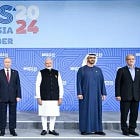


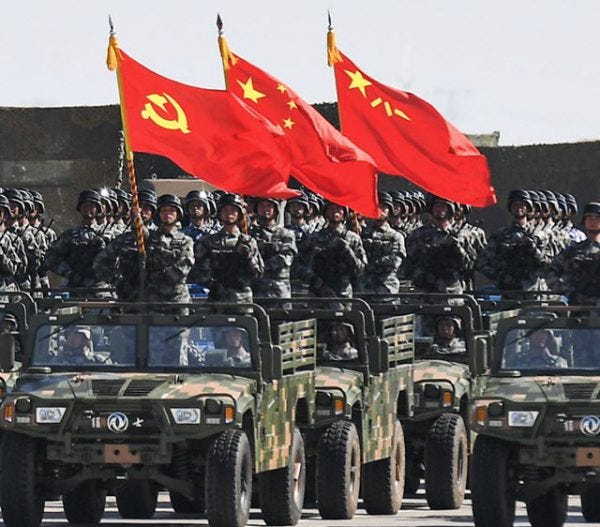


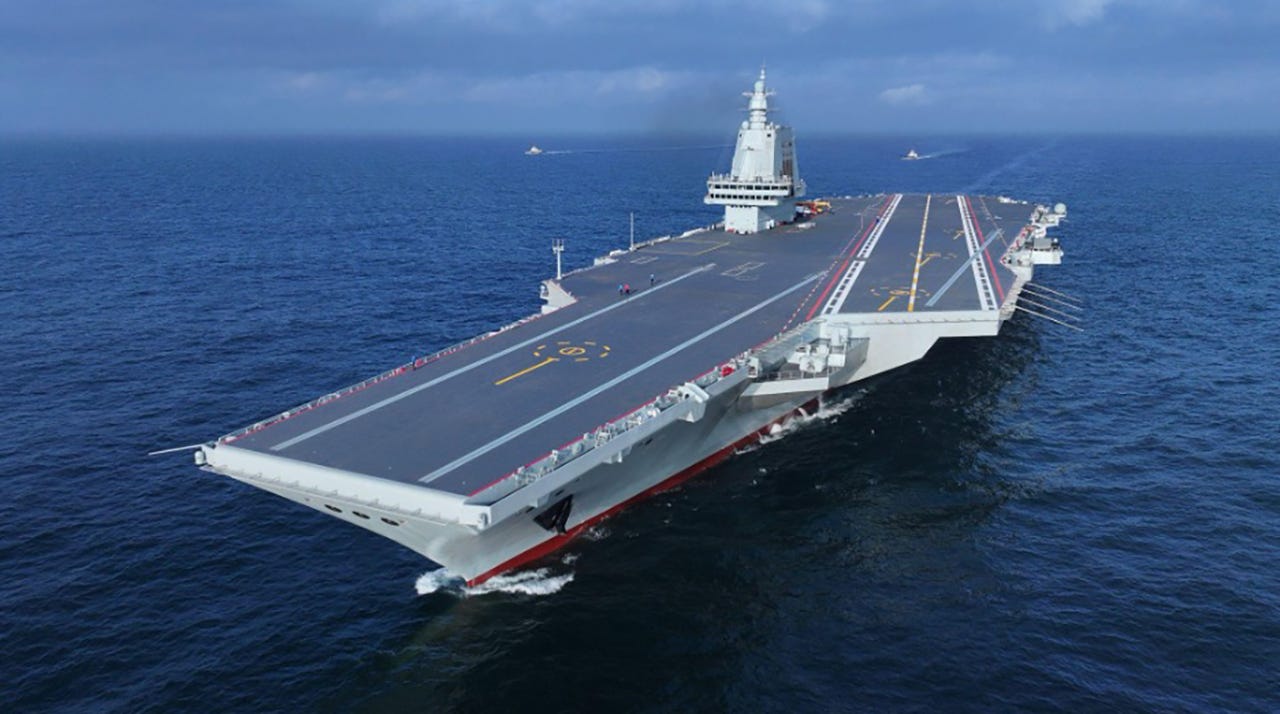

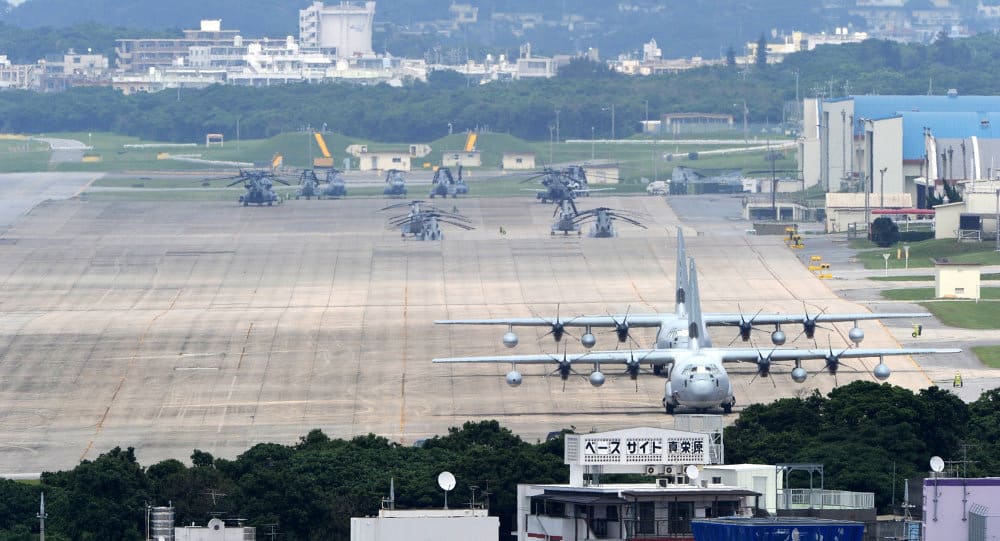


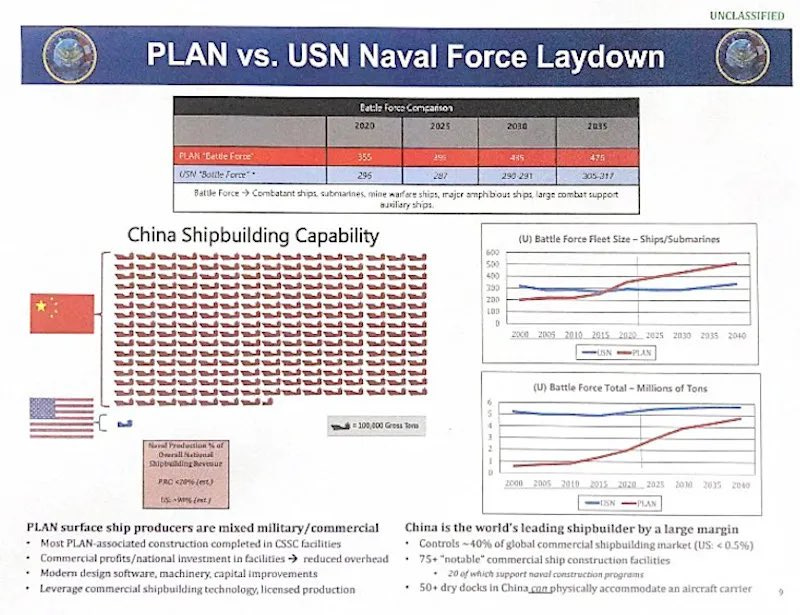

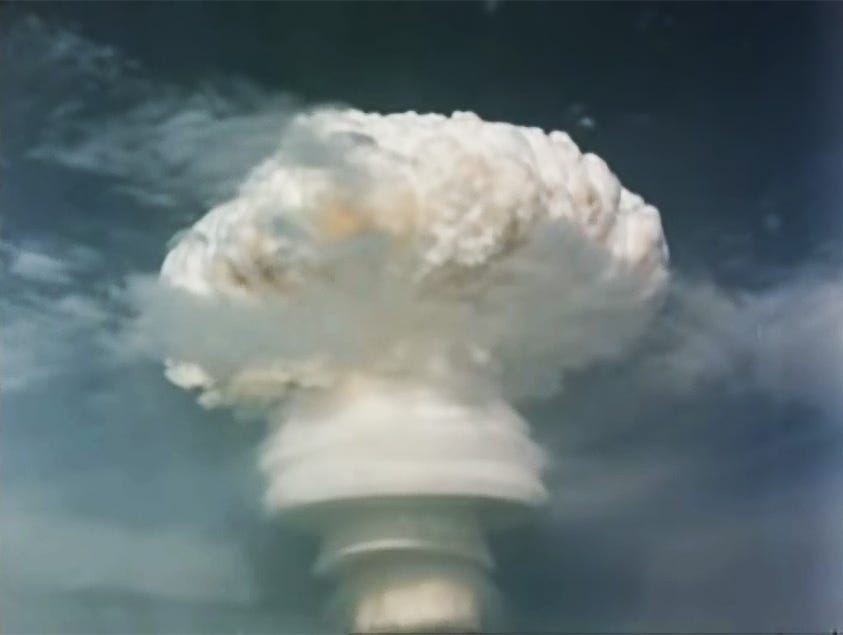
You missed one spot: Insurgency in Xinjiang by former ISIS who are returning from Syria along with the war booties.
Anyway, this war will drag on for years, if not decades. I'm not surprised if the weather is also weaponized in this war. After all, such experiments have already been conducted with mixed results beyond expectations.
So, what will China do when its southern and western regions are hit with long spell of drought? Divert the major water resources (currently shared with other nations) for own use and risk opening new fronts? Or impose rationing which could eventually lead to food riots?
P/s: Remember the news of massive flooding in Dubai last year? At the same time, Pakistan and northern India were hit with intense drought (which subsequently led to India's decision to halt rice exports few months later). Find out what a certain "start-up" did in Dubai the day before these events begin. It involves lots of drones zapping high voltage at each other somewhere very high in the sky. The idea is to ionize the surrounding air to attract enough water molecules to form clouds which could then be seeded. Let's just say the cloud seeding part is no longer necessary. By the way, do you know one could "steer" a typhoon (and supercharge it simultaneously) by sprinkling some dry ice into its "eye"?